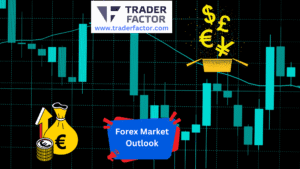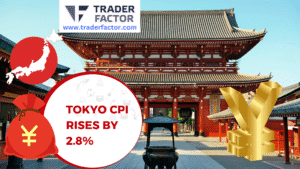Today, the Bank of Japan (BOJ) has made headlines by raising its interest rates by 25 basis points to 0.5%, marking the highest level since 2008. This move is part of a broader strategy to address inflation, with the BOJ projecting a price outlook above 2% for both fiscal 2025 and 2026.
Table of Contents
ToggleFrom Negative Rates to Hawkish Policies
End of Negative Interest Rates in 2024
The BOJ began 2024 by overturning a hallmark of its dovish monetary policy—the negative interest rate of -0.1%. This policy, which had been in place for years, was aimed at combating deflation and supporting economic growth. However, as inflation gained momentum and wage growth picked up, the BOJ raised its policy rate to 0.1% in March 2024. This marked a significant turning point, restoring rates to positive territory for the first time in a decade.
Gradual Rate Hikes in 2024
Throughout the year, the BOJ cautiously increased rates to avoid destabilizing the fragile economy:
- April 2024: The policy rate climbed to 0.2%.
- July 2024: Another hike took it to 0.25%.
- December 2024: By the end of the year, rates hit 0.3%.
These measured adjustments reflected the BOJ’s carefully calibrated approach to balancing inflation control while maintaining economic growth.
January 2025: A Major Rate Hike
The BOJ began 2025 with a decisive 25 basis-point increase, raising the policy rate to 0.5%—the highest level since 2008. This move not only signals the end of an era marked by historically low rates but also indicates a bolder stance on inflation control. Higher inflation forecasts for fiscal year 2025, coupled with growing labor shortages and wage hikes, reinforced the need for this bold step.
Shifting Inflation and Economic Dynamics
Inflation Targets and Wage Growth
Inflation has been a key driver of the BOJ’s policy changes. Core inflation rose to 2.7% in fiscal year 2024 with expectations of moderating to 2.4% and 2.0% for fiscal years 2025 and 2026, respectively. These forecasts align with the BOJ’s 2% inflation target—a critical milestone for Japan’s economic revival.
Rising wages, driven by labor shortages and corporate adjustments, have also bolstered domestic demand, signaling a healthier economic trajectory despite external risks like global uncertainties and geopolitical tensions.
Impact on GDP Growth
Economic growth, while subdued, has shown positive signs, with GDP forecast to grow 0.5% in 2024 and 1.1% in 2025. The BOJ’s actions bolster confidence in achieving controlled growth while minimizing inflation risks.
Market Repercussions and the Yield Curve
Flattening to Steepening Yield Curve
The BOJ’s policy changes have significantly reshaped Japan’s yield curve.
- Early 2024: The curve flattened as short-term rates increased while long-term yields remained low, reflecting cautious market sentiment.
- Late 2024–2025: By late 2024, the yield curve steepened as markets began pricing in more aggressive rate hikes. The January 2025 hike reinforced this trend, shifting sentiment toward confidence in economic recovery and inflation management.
Future Expectations
The BOJ has signaled the possibility of additional rate increases, which could further steepen the yield curve and highlight the central bank’s commitment to stabilizing the economy.
Yen News Today: USD/JPY Suffers Losses Post-Rate Hike
The BOJ’s recent rate hike has also had a pronounced effect on global currency markets. On Friday, USD/JPY saw significant losses, trading below 155.50 during early European hours.
The pair continues to remain under pressure, with the Japanese Yen to usd strength due to:
- The BOJ’s Interest Rate Hike: Raising rates to 0.5% signaled a significant policy shift that boosted investor confidence in the Yen.
- Higher Inflation Forecasts: The BOJ’s projections of continued inflation and potential for more rate hikes further support the Yen.
Trader optimism for the Japanese currency persists ahead of BOJ Governor Kazuo Ueda’s presser, where more insights into future policy directions are expected.
Looking Ahead
The Bank of Japan’s transition from ultra-dovish to more hawkish policies between 2024 and 2025 marks a turning point in its economic history. By moving decisively on interest rates, the BOJ has signaled its intent to address inflation while cautiously supporting economic growth. Changes in the yield curve and the Yen’s strengthening indicate market confidence in these strategic moves.
With inflation likely to moderate and further rate hikes potentially on the horizon, the BOJ’s actions will remain under close scrutiny by global markets. Governor Ueda’s communication in the coming weeks will further clarify the central bank’s resolve and provide a roadmap for Japan’s economic recovery.

Disclaimer:
All information has been prepared by TraderFactor or partners. The information does not contain a record of TraderFactor or partner’s prices or an offer of or solicitation for a transaction in any financial instrument. No representation or warranty is given as to the accuracy or completeness of this information. Any material provided does not have regard to the specific investment objective and financial situation of any person who may read it. Past performance is not a reliable indicator of future performance.

















